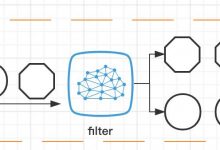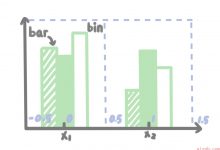微信公众号:[中间件兴趣圈]
作者简介:《RocketMQ技术内幕》作者
本文将重点分析一下dubbo限流的另外一个方式,tps过滤器。
@Activate(group = Constants.PROVIDER, value = Constants.TPS_LIMIT_RATE_KEY)
- 过滤器作用
服务调用tps过滤器 - 使用场景
对Dubbo服务提供者实现限流(tps)。 - 阻断条件
当服务调用者超过其TPS时,直接返回rpc exception。
接下来从源码的角度分析Tps过滤器的实现机制。
1public class TpsLimitFilter implements Filter {2 private final TPSLimiter tpsLimiter = new DefaultTPSLimiter();3 @Override4 public Result invoke(Invoker<?> invoker, Invocation invocation) throws RpcException {5 if (!tpsLimiter.isAllowable(invoker.getUrl(), invocation)) {6 throw new RpcException(7 \"Failed to invoke service \" + invoker.getInterface().getName() + \".\" + invocation.getMethodName() + \" because exceed max service tps.\");8 }9 return invoker.invoke(invocation);10 }11}
tps limit 生效的条件是,服务提供者的url中包含了tps=""这个属性,默认TPS统计时长为1分钟,表示如果在1分钟之内的调用次数超过配置的tps,则阻断本次RPC服务调用。
其TPS控制代码主要由DefaultTPSLimiter实现。
1public class DefaultTPSLimiter implements TPSLimiter {2 private final ConcurrentMap<String, StatItem> stats = new ConcurrentHashMap<String, StatItem>();3 @Override4 public boolean isAllowable(URL url, Invocation invocation) {5 int rate = url.getParameter(Constants.TPS_LIMIT_RATE_KEY, -1); // @16 long interval = url.getParameter(Constants.TPS_LIMIT_INTERVAL_KEY,7 Constants.DEFAULT_TPS_LIMIT_INTERVAL);8 String serviceKey = url.getServiceKey(); // @29 if (rate > 0) {10 StatItem statItem = stats.get(serviceKey);11 if (statItem == null) {12 stats.putIfAbsent(serviceKey,13 new StatItem(serviceKey, rate, interval));14 statItem = stats.get(serviceKey);15 }16 return statItem.isAllowable(); // @317 } else {18 StatItem statItem = stats.get(serviceKey);19 if (statItem != null) {20 stats.remove(serviceKey);21 }22 }2324 return true;25 }26}
代码@1:获取服务提供者url中的参数tps、tps.interval属性。
代码@2:获取服务key,并创建或获取对应的StatItem。
代码@3:调用StatItem的isAllowable()方法来判断是否可用。
StatItem#isAllowable
1public boolean isAllowable() {2 long now = System.currentTimeMillis();3 if (now > lastResetTime + interval) { // @14 token.set(rate);5 lastResetTime = now;6 }78 int value = token.get();9 boolean flag = false;10 while (value > 0 && !flag) { // @211 flag = token.compareAndSet(value, value - 1);12 value = token.get();13 }14 return flag;15 }
该类的核心思想:是漏桶算法。
代码@1:如果当前时间大于(上一次刷新时间+统计间隔),重新复位token为rate,表示重新生成一批token。
代码@2:每使用一次,消耗一个token,如果能成功消耗一个token则返回true,如果没有可消耗的token,则直接返回false。
Tps过滤器的实现原理其实比较简单,大家可以从这里体会到ConcurrentHashMap、漏桶算法的简易实现。
广告:作者的新书《RocketMQ技术内幕》已上市
《RocketMQ技术内幕》已出版上市,目前可在主流购物平台(京东、天猫等)购买,本书从源码角度深度分析了RocketMQ NameServer、消息发送、消息存储、消息消费、消息过滤、主从同步HA、事务消息;在实战篇重点介绍了RocketMQ运维管理界面与当前支持的39个运维命令;并在附录部分罗列了RocketMQ几乎所有的配置参数。本书得到了RocketMQ创始人、阿里巴巴Messaging开源技术负责人、Linux OpenMessaging 主席的高度认可并作序推荐。目前是国内第一本成体系剖析RocketMQ的书籍。
新书7折优惠!7折优惠!7折优惠!
更多文章请关注微信公众号:
推荐关注微信公众号:RocketMQ官方微信公众号
 爱站程序员基地
爱站程序员基地


